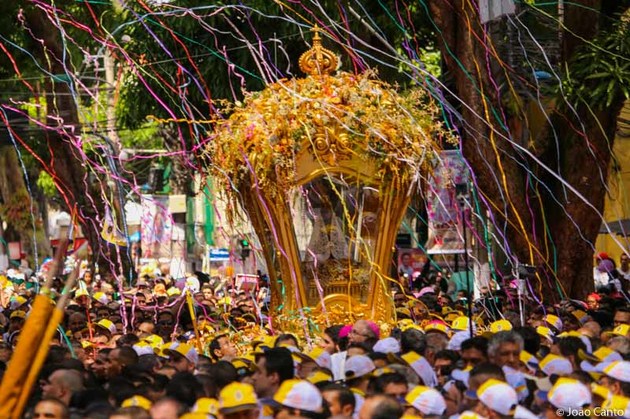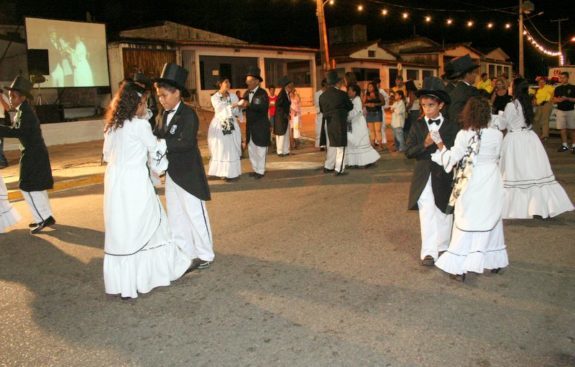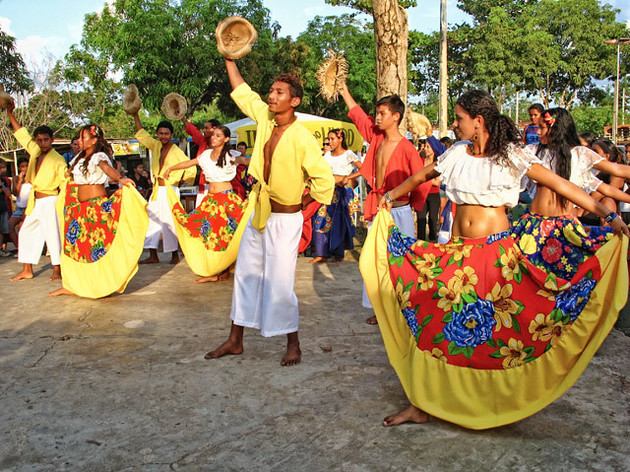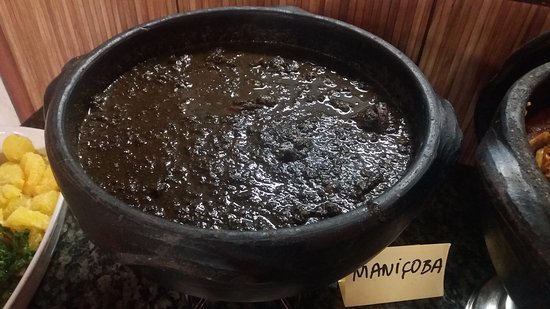The culture of the Northern region of Brazil is vast, rich and heavily influenced by the Indians, Europeans, and Africans, as well as by migrants.
Because it is a region with a very mixed population, the North has a great diversity of cultural manifestations, be it customs, beliefs, popular festivals, cuisine, dances, etc.
It is important to highlight that the region comprises the states:
Acre, Amapá, Amazonas, Pará, Rondônia, Roraima and Tocantins.
North Region Festivals
The festivities in northern Brazil are strongly influenced by indigenous culture, as well as Christian religiosity.
See what they are and how some important regional parties happen.
Nazare’s Cirio

The procession that takes place in the state of Pará is a tribute to Nossa Senhora de Nazaré and takes place in October.
Thousands of faithful walk for miles on decorated streets carrying an image of Our Lady of Nazareth. The route is taken from the Cathedral of Belém to the Praça Santuário de Nazaré, where the image stays for fifteen days.
In 2004, Círio de Nazaré became part of the registration of Cultural Heritage of Immaterial Nature of the Institute of National Historical and Artistic Heritage (Iphan).
Parintins Festival

The party, which is held in June, in the state of Amazonas , takes place in a place called Bumbódromo . The festival consists of the dispute of two oxen, Garantido (represented in red), and Caprichoso (represented in blue).
The event lasts for three days and has some characters defined. There is also regulation and judgment, which aims to define the best performance. In the end, the winning ox is known.
According to legend, a man (Pai Francisco) would have killed the boss’s best ox in order to satisfy the desire of his wife (Mother Catirina), who was pregnant and wanting to eat the animal’s tongue.
Upon discovering the reason for the death of his favorite animal, the boss called a priest and a shaman to revive the ox, which returns to live. To celebrate, a party is held.
Other northern festivities
In addition to the parties above, the region also has the “Passion of Christ” Staging. This event takes place in Jerusalem, the second largest scenic city in the world, located in the state of Amazonas.
Other parties that are also typical of the North of Brazil are:
- Folia de Reis ;
- Feast of the Divine;
- Congo or Congada ;
- Cavalhada;
- June Festivals .
Northern Region Dances
Chameleon

This dance has the participation of men and women, who dance to the sound of the guitar, the cavaquinho and the fiddle. The dancers dress up to do the steps of this dance that is called journeys.
Torch Dance
The sound of the accordion, viola, guitar and fiddle cradles the pairs in this dance made with slow and light steps. A similar dance is the umbigada, of Afro-Brazilian origin.
Other Northern regional dances

The state is quite large in territory and has diversity in all cultural aspects, so it is also in the dance of the region. Other types of northern dances are:
- confectioner;
- marambiré;
- marajoara lundu;
- marujada;
- dance of the siriá;
- samba do cacete;
- resounding;
- jacundá;
- carimbó .
Northern regional cuisine
The traditional cuisine of northern Brazil is rich in manioc and fish , a legacy of indigenous customs.
The variety of fruits in the region, in turn, stands out in national cuisine, as well as in international cuisine. Examples include guarana, the acai, the cupuaçu and soursop .
Typical dishes
Most of the typical dishes of the region are quite unusual in the rest of the country. Experimenting with them is therefore a special experience.
See some of these preparations:
Tucupi
Tucupi is a recipe prepared based on cassava and very common in the state of Pará.

maniçoba
This is a recipe made with the crushed cassava leaf, but it resembles a feijoada, which is why it became known as “feijoada without beans”.

Tacaca
Tacacá is what is called the typical northern dish made with cassava broth, shrimp and tucupi.

Among the vast northern cuisine, the highlights are also:
- Stew;
- gurijuba;
- pirarucu de casaca and dry shrimp;
- cassava gum;
- jambu;
- smelling pepper;
- biju;
- Manioc cake;
- Brazil nut;
- Sun dried meat.
Take the opportunity to also know the Legend of Cassava .
North Region Handicrafts

Handicrafts have also been heavily influenced by indigenous culture.
Objects made from clay, ceramics, leather, wood, soapstone and seeds are part of the northern handicrafts, which form jewelry, decorative items, among others.
The ceramic marajoara is an important example of craft in the area. Started by the Indians of Marajó Island, it was the first ceramic art to appear in Brazil. Nowadays it is also known abroad.
Northern regional legends and myths
The region has some folkloric stories typical of the place. Check out some:
Legend of Boto

The legend of the dolphin tells the story of a dolphin that turns into a man during the night.
He dresses in white and wears a hat to hide his big porpoise nose.
Seduce women for a walk and get them pregnant. This legend is told to justify the fact that some single girl appears pregnant.
Legend of the Victoria Regia
According to the legend of Vitória-Régia , it is a plant that originally would have been an Indian.
It is said that this Indian woman fell in love with the moon – called Jaci by the Indians. Seeing the reflection of the moon in the waters of the river, India leaned over to kiss him, which made her fall and drown.
Moved by the event, Jaci transformed the young woman into a flower – Vitória-Régia.
Discover other myths and legends of Brazilian folklore :
- Boogeyman
- Boitatá
- Caipora
- Big Snake
- Curupira
- Iara
- Werewolf
- Headless mule
- Saci-Pererê
- Jurupari
- Açaí legend

